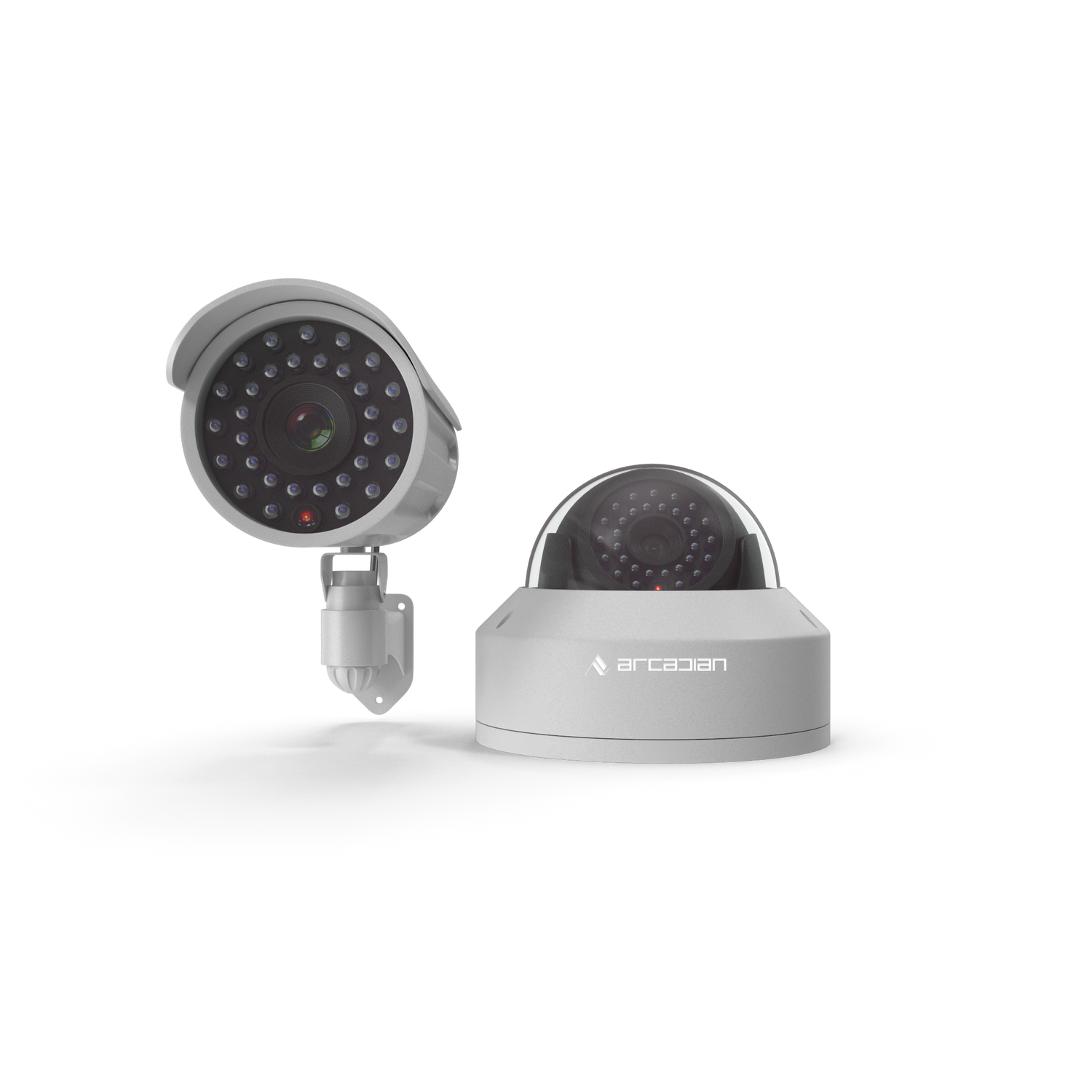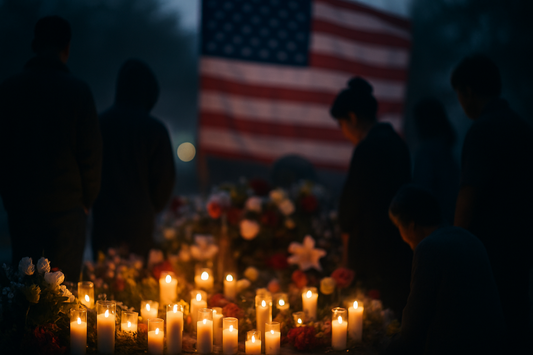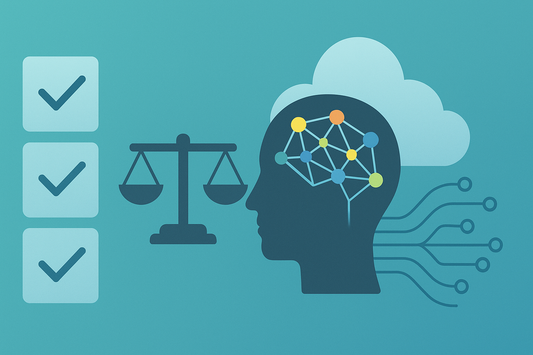School Safety in 2025: What the Data Really Says About U.S. & Canadian High Schools (and How ArcadianAI Can Help)
School safety isn’t one issue—it’s a web of risks: gun incidents, bullying (on-campus and online), hoaxes, and mental-health crises. Here’s the latest data for U.S. and Canadian high schools—and where cloud-native, AI-driven surveillance like ArcadianAI’s Ranger actually moves the needle.

Introduction
The numbers demand urgency. In the U.S., 19% of students ages 12–18 reported being bullied during school in 2021–22, and 3% reported carrying a weapon on school property—with 7% threatened or injured with a weapon in the past year. Meanwhile, U.S. schools reported the highest rate in a decade of firearm possessions at school in 2021–22. (National Center for Education Statistics) In Canada, new national findings warn that 71% of youth (12–17) experienced at least one form of bullying in the past 12 months. (Global News)
ArcadianAI is built for this reality. Unlike static NVRs or closed VSaaS ecosystems (think legacy VMS or vendor-locked solutions from players like Verkada or traditional NVR stacks), Ranger fuses scene understanding, behavior context, and multi-site visibility to help schools detect meaningful risk and slash false alarms—without ripping and replacing every camera.
Quick Summary / Key Takeaways
-
U.S. bullying remains high; weapons still present. (National Center for Education Statistics)
-
Gunfire on school grounds hit the 2nd-highest school-year total (2013–present). (Everytown Research & Policy)
-
Canada flags widespread bullying and mental-health strain. (Global News)
-
Static analytics miss context; AI + Ranger cuts noise and speeds response.
-
Cloud-native, camera-agnostic designs future-proof school safety programs.
Background & Relevance
-
Bullying prevalence (U.S.): 19% of students ages 12–18 reported bullying during school (2021–22). (National Center for Education Statistics)
-
Guns at school (U.S.): 5,000 K–12 students were reported to have possessed firearms at school in 2021–22—the highest rate in a decade (10 per 100,000). (National Center for Education Statistics)
-
Gunfire on school grounds: The 2023–24 school year recorded the second-highest number of K–12 shooting incidents since 2013. (Everytown Research & Policy)
-
Canada: 71% of youth faced at least one bullying incident in the last year (2025 report); prior federal stats show many bullied youth experience it monthly or more. (Global News)
Core Topic Exploration
How common are school shootings—and what’s changing?
-
The K–12 School Shooting Database (CHDS) tracks every school shooting since 1966 and shows the breadth of incidents (from brandishing to shots fired). Analyses highlight multi-year growth in K–12 gun incidents nationwide. (K-12 School Shooting Database)
-
Why this matters: Even when fatal events are rare, gun possession at school and gunfire on school grounds create lockdowns, trauma, and costly operational disruptions. (National Center for Education Statistics)
-
How Ranger helps: Real-time, context-aware detection (person + object + behavior) reduces noise from motion analytics and highlights credible threats for faster human review and escalation.
Bullying, weapons, and fear: the daily reality for students
-
Bullying (U.S.): 19% bullied during school; fear/avoidance affected ~4% (e.g., skipping activities/classes due to safety concerns). (National Center for Education Statistics)
-
Weapons (U.S.): 3% carried a weapon at school in the prior 30 days; 7% threatened or injured with a weapon in the previous 12 months. (National Center for Education Statistics)
-
Canada: Multiple sources emphasize frequent bullying and related harms (including cyberbullying). (Global News)
-
How Ranger helps:
-
Detects behavioral precursors (stalking, harassment clusters, group aggression, repeated cornering) vs. simple motion.
-
Creates heatmaps/paths to identify hotspots (bathroom corridors, stairwells, bus loops) for admin action—without turning schools into fortresses.
-
Mental health, cyberbullying & online monitoring: proceed with caution
-
CDC’s YRBSS 2023 highlights ongoing issues around violence, mental health, and suicidal ideation among high-schoolers (with some improvements post-pandemic). (CDC)
-
Districts are testing student-device monitoring tools; investigative reporting has flagged serious privacy/security risks in some implementations. Schools must align safety with privacy by design. (AP News)
-
How Ranger helps: Focuses on physical-world context (cameras you already own), enforces role-based access, audit logs, and data minimization—supporting privacy while improving safety.
Hoaxes, swatting, and lockdown fatigue
-
U.S. and Canadian schools face hoax threats and swatting that drain law-enforcement resources and disrupt learning. Recent Canadian cases show cross-border, tech-enabled threats and local police warnings. (Times Union)
-
How Ranger helps: Cuts false alarms from noisy analytics so staff and responders aren’t desensitized. When an alert fires, it’s because context supports it—not because a tree moved.
Comparisons & Use Cases
What changes when schools adopt ArcadianAI vs. legacy systems?
| Capability | Legacy NVR / Static Analytics | Typical VSaaS (vendor-locked) | ArcadianAI Ranger (cloud-native, camera-agnostic) |
|---|---|---|---|
| Detection quality | Motion rules; high false alarms | Basic object detection; limited context | Context-aware person/vehicle/behavior understanding |
| Bullying/assault precursors | Rarely detected | Sometimes missed (scene-agnostic) | Tracks patterns (loitering, following, group dynamics) |
| Weapon-related cues | Often after the fact | Varies | Precursor signals + operator triage UI |
| False alarm load | High (operator fatigue) | Moderate | 30–60% reduction typical with context filtering (estimate varies by site density; pilot recommended) |
| Camera lock-in | High (vendor/NVR bound) | High (closed ecosystem) | Low (works with many ONVIF/IP cameras) |
| Multi-site oversight | Manual | Varies | Unified dashboards + health checks + search |
(Where to start: pilot 10–20 critical cameras—entrances, halls, stairwells, bus loop—then expand by ROI.)
Practical campus scenarios Ranger improves
-
Arrival/dismissal: Detect escalating disputes, weapons cues, vehicle risks.
-
Between-class transitions: Identify aggression corridors; target supervision.
-
After-hours: Deter break-ins, vandalism, athletic-field incidents with verified alerts.
-
Event nights: Crowd-aware analytics for fights and perimeter breaches.
Common Questions (FAQ)
Q1. Are school shootings increasing?
Trend analyses show multi-year growth in K–12 firearm incidents, with 2023–24 the second-highest school year since 2013 for gunfire on school grounds. (Axios)
Q2. How common is bullying in U.S. high schools?
19% of students ages 12–18 reported being bullied during school in 2021–22. (National Center for Education Statistics)
Q3. What about weapons at school?
3% of students reported carrying a weapon at school (past 30 days) and 7% were threatened/injured with a weapon (past 12 months). (National Center for Education Statistics)
Q4. What’s the picture in Canada?
Recent national reporting shows 71% of youth experienced at least one form of bullying in the past year; federal stats also document frequent bullying among youth. (Global News)
Q5. Do AI student-device monitors improve safety?
Evidence is mixed; some deployments raised privacy and security concerns. Physical-world, camera-based AI with strong governance can deliver safety gains while respecting privacy. (AP News)
Conclusion & CTA
School safety requires credible detection, actionable triage, and privacy-aware design. By layering context-aware AI on cameras you already own, ArcadianAI’s Ranger reduces noise, surfaces real risk faster, and helps administrators and SROs act sooner—without vendor lock-in.
See ArcadianAI in Action → Get Demo – ArcadianAI
External References (selected)
-
NCES & BJS — Report on Indicators of School Crime and Safety: 2023 (bullying, weapons, preparedness). (National Center for Education Statistics)
-
CDC — YRBSS 2023: Data Summary & Trends (teen mental health, violence). (CDC)
-
Everytown — Gunfire on school grounds (2023–24 second-highest). (Everytown Research & Policy)
-
K–12 School Shooting Database (CHDS) — Incident-level research hub. (K-12 School Shooting Database)
-
Children First Canada — Bullying prevalence (Canada, 2025). (Global News)
-
Statistics Canada — Crime severity/youth crime trend context. (Statistics Canada)
-
AP Investigation — Risks of student-device monitoring tools. (AP News)
Security Glossary (2025 Edition)
-
Active Shooter (K–12) — An individual actively engaged in killing or attempting to kill people in a school setting.
-
AI-Verified Alert — A notification triggered after multi-factor AI checks (object, behavior, context) to reduce false alarms.
-
Anonymous Threat Reporting System — School tool that lets students/staff submit safety tips without revealing identity. (National Center for Education Statistics)
-
Bullying (On-Campus) — Repeated, intentional harm (physical, verbal, social, or digital) involving a power imbalance. (National Center for Education Statistics)
-
Camera-Agnostic — Works with diverse IP/ONVIF cameras across vendors without lock-in.
-
Context-Aware Detection — AI that interprets scene semantics (who/what/where/behavior) rather than raw motion.
-
Gunfire on School Grounds — Incidents where a firearm is discharged on school property, regardless of motive or casualties. (Everytown Research & Policy)
-
Hoax / Swatting — False emergency reports intended to provoke heavy police response, often leveraging spoofed calls/IPs. (Ground News)
-
K–12 School Shooting Database (K-12 SSDB) — Comprehensive research dataset of U.S. school shootings since 1966. (K-12 School Shooting Database)
-
NVR (Network Video Recorder) — On-prem recorder that stores camera streams; often rule-based analytics with high false alarms.
-
NCES — U.S. National Center for Education Statistics; publishes Indicators of School Crime and Safety with BJS. (National Center for Education Statistics)
-
Ranger (ArcadianAI) — Cloud-native, AI assistant for video surveillance; context-aware alerts, multi-site dashboards, and privacy controls.
-
School Fear & Avoidance — Students skipping classes/activities or staying home due to fear of attack/harm. (National Center for Education Statistics)
-
Scene Semantics — AI understanding of spatial relationships and behaviors (e.g., following, crowding, cornering).
-
Threat Triaging — Prioritizing alerts based on severity, confidence, and proximity to students/staff.
-
VSaaS (Video Surveillance as a Service) — Cloud video platform for storage, analytics, and management; may involve vendor lock-in.
-
Weapon Carrying (YRBSS) — Self-reported student carrying of a weapon (gun/knife/club) on school property at least 1 day in past 30 days. (National Center for Education Statistics)

Security is like insurance—until you need it, you don’t think about it.
But when something goes wrong? Break-ins, theft, liability claims—suddenly, it’s all you think about.
ArcadianAI upgrades your security to the AI era—no new hardware, no sky-high costs, just smart protection that works.
→ Stop security incidents before they happen
→ Cut security costs without cutting corners
→ Run your business without the worry
Because the best security isn’t reactive—it’s proactive.







